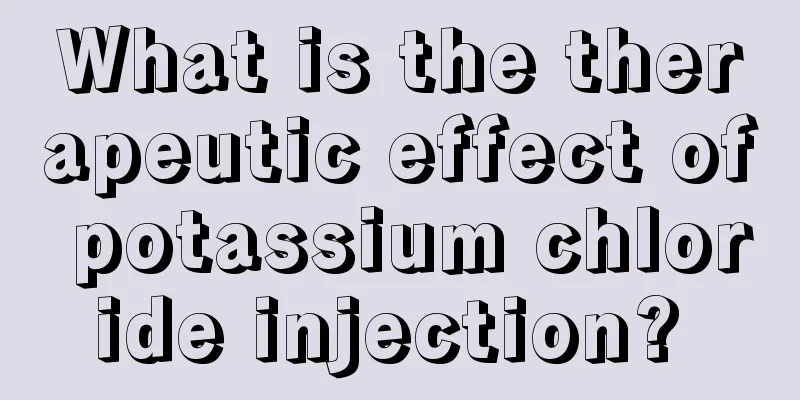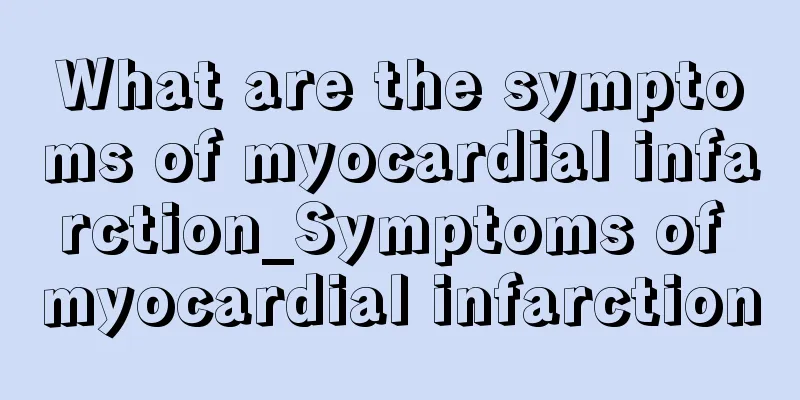What is the therapeutic effect of potassium chloride injection?

|
Potassium chloride injection is a relatively common therapeutic drug, especially in the treatment of hypokalemia. We know that once hypokalemia occurs in a person, it is very harmful to the human body. At this time, potassium chloride injection can be used for treatment, which can effectively prevent the symptoms of hypokalemia. In addition, if poisoning from drugs such as digitalis occurs, potassium chloride injection can also be used for treatment. 1. Treatment of hypokalemia Treatment of hypokalemia caused by various reasons, such as insufficient food intake, vomiting, severe diarrhea, use of potassium-excreting diuretics, hypokalemic familial periodic paralysis, hypokalemia caused by long-term use of glucocorticoids and supplementation of hypertonic glucose, etc. 2. Prevent hypokalemia To prevent hypokalemia, preventive potassium supplementation is required when the patient has potassium loss, especially if hypokalemia is harmful to the patient (such as patients using digitalis drugs), such as eating very little, severe or chronic diarrhea, long-term use of corticosteroids, potassium-losing nephropathy, Bartter syndrome, etc. 3. Digitalis poisoning Digitalis poisoning causes frequent, multifocal premature beats or tachyarrhythmias. Used for patients with severe hypokalemia or those who cannot take oral medication. The general usage is to add 10-15 ml of 10% potassium chloride injection to 500 ml of 5% glucose injection and drip (avoid direct intravenous drip and push injection). The dose, concentration and speed of potassium supplementation are determined based on the clinical condition, blood potassium concentration and improvement of the potassium deficiency pattern on the electrocardiogram. The potassium concentration should not exceed 3.4g/L (45mmol/L), the potassium supplementation rate should not exceed 0.75g/hour (10mmol/hour), and the daily potassium supplementation amount should be 3-4.5g (40-60mmol). When potassium deficiency in the body causes severe rapid ventricular ectopic arrhythmias, such as torsades de pointes, short bursts, recurrent multiline ventricular tachycardia, ventricular flutter and other life-threatening severe arrhythmias, the potassium salt concentration should be high. |
<<: What are the symptoms of hand qi? Will it itch?
>>: What are the effects and hazards of health products?
Recommend
How long can you live with brain cancer chemotherapy
Malignant tumors generally cannot be completely r...
What is easier to fall asleep listening to?
Nowadays, many people are under a lot of pressure...
What should I do if chili oil splashes on my white clothes?
Many people in life like to wear white clothes. C...
What are the oldest ways to make homemade soap?
Soap has been around in my country for a long tim...
What to do if your shoulder hurts when playing table tennis
Nowadays, many people like to play table tennis. ...
How is ovarian cancer caused? There are 4 factors that trigger it
Many cancers only occur in female friends. In fac...
What's up with the cool blood
Some people have hot hands and feet all year roun...
Can adult overbite be corrected
The formation of overbite is related to many fact...
What is non-GMO, traditionally grown
In the past, everything we ate was non-GMO, and w...
Common misunderstandings in the treatment of cervical cancer
What are the misconceptions about the treatment o...
What are the symptoms of urticaria throat edema
We all know that the symptom of urticaria mainly ...
What are the characteristics of comprehensive interventional treatment for liver cancer? Comprehensive analysis of comprehensive interventional treatment methods for liver cancer
Methods such as TACE and non-vascular interventio...
How to avoid radiation pneumonia during radiotherapy for lung cancer? Pay attention to these four points
Lung cancer patients who do not want to develop c...
To maintain your health in summer, you need to protect your eyes with a diet that helps you look beautiful
In the hot summer, people who are worried about g...
What's up with that little lump on my throat?
The throat is an organ that plays many roles in o...









